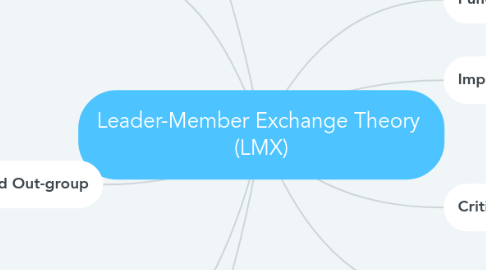Leader-Member Exchange Theory (LMX)
Stakeholder Mapにより


1. Origins
1.1. Developed by: Dansereau, Graen, and Hagan
1.2. In the 1970s
2. Phases of LMX Theory
2.1. Role-Taking Phase
2.1.1. Subordinate's capability and eagerness
2.1.2. First Impressions
2.2. Role-Making Phase
2.2.1. Evolution of role functions
2.2.2. Leader and subordinate define working relationships
2.3. Routinization Phase
2.3.1. Consistent interaction
2.3.2. Stabilized leader-member connections
3. In-group and Out-group
3.1. In-group
3.1.1. Highly trusted subordinates
3.1.2. High-performing, proactive members
3.1.3. Enjoy more access to resources and opportunities
3.2. Out-group
3.2.1. Less trusted or less engaged subordinates
3.2.2. Perform just the specified tasks
3.2.3. Lower interaction with the leader
